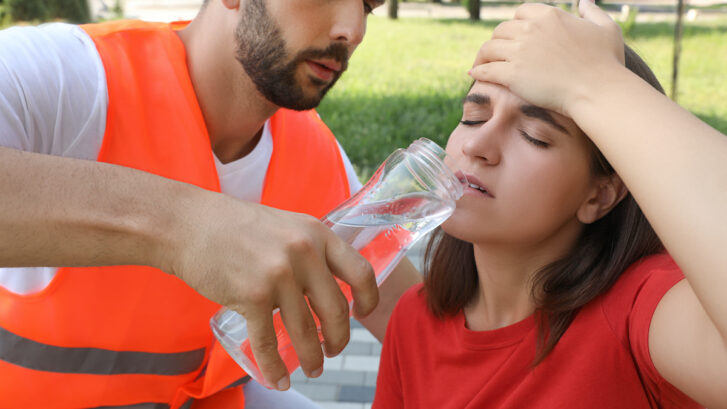Understanding Different Heat Illnesses
As the temperatures rise during the warmer months, many of us enjoy spending more time outdoors. However, with the increase in temperatures comes the potential risk of heat-related illnesses. Our primary care doctors in Jupiter want you to be informed about the different types of heat illnesses to prevent them and to provide proper care if someone is affected.
1. Heat Stroke
What it is: Heat stroke is the most severe form of heat illness and is a medical emergency. It happens when the body’s temperature rises rapidly, and it can’t cool down.
Symptoms:
- High body temperature (above 103°F)
- Hot, red, dry, or damp skin
- Fast, strong pulse
- Headache
- Dizziness
- Nausea
- Confusion
- Losing consciousness (passing out)
What to do: Call 911 immediately. While waiting for medical professionals, move the person to a cooler place and try to reduce their body temperature with cool cloths or a cool bath. Do not give the person anything to drink.
2. Heat Exhaustion
What it is: Heat exhaustion is a warning that your body can no longer keep itself cool. If left untreated, it can escalate to heat stroke.
Symptoms:
- Heavy sweating
- Cold, pale, and clammy skin
- Fast, weak pulse
- Nausea or vomiting
- Muscle cramps
- Tiredness or weakness
- Dizziness
- Headache
- Fainting
What to do: Move to a cool place, loosen your clothes, put cool, wet clothes on your body or take a cool bath. If the person is fully conscious, they can sip water. If the symptoms worsen or last longer than an hour, seek medical attention.
3. Heat Cramps
What it is: Muscle spasms or pains that occur due to intense exercise in hot weather.
Symptoms:
- Muscle cramps, usually in the legs or abdomen
- Heavy sweating
What to do: Stop the activity and move to a cool place. Drink water or a sports drink. Wait for the cramps to go away before you do any more physical activity.
4. Heat Rash
What it is: Skin irritation from excessive sweating.
Symptoms:
- Red clusters of small blisters that look like pimples on the skin
- Usually appears on the neck, chest, groin, or elbow creases
What to do: Stay in a cool, dry place. Keep the rash dry and avoid using ointments or creams as they can keep the skin warm and moist, worsening the condition.
5. Dehydration
What it is: A lack of enough water in the body, often caused by too much sweating.
Symptoms:
- Dry mouth and throat
- Dark yellow urine
- Not urinating much
- Feeling dizzy or lightheaded
- Feeling tired
- Dry skin
What to do: Drink plenty of fluids, preferably water. If dehydration is severe and accompanied by symptoms like confusion, rapid heartbeat, or rapid breathing, seek medical attention immediately.
Prevention Tips
- Stay Hydrated: Drink plenty of water throughout the day. Avoid drinks with caffeine or alcohol as they can dehydrate you.
- Dress Appropriately: Wear lightweight, light-colored, loose-fitting clothing. Use a wide-brimmed hat or an umbrella for shade.
- Stay Cool: Avoid direct sunlight whenever possible, especially during the hottest parts of the day. Use fans or air conditioning to cool down.
- Limit Outdoor Activities: Do strenuous activities during the cooler parts of the day, such as early morning or late evening.
By understanding the signs and symptoms of heat-related illnesses and taking preventive measures, you can safely enjoy the warm weather without the health risks. Always listen to your body, and if you or someone around you is showing signs of a heat illness, take it seriously and seek medical attention if needed.



